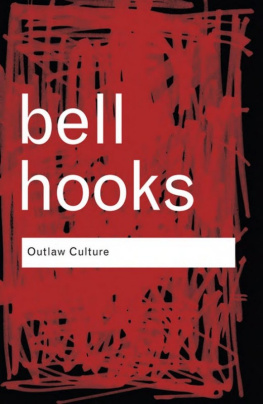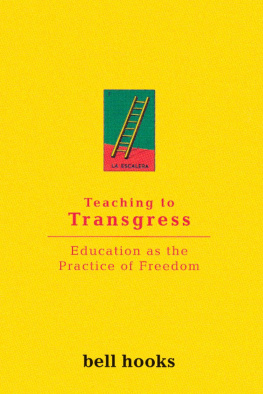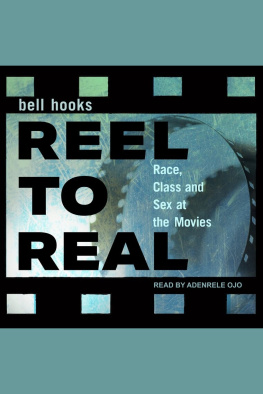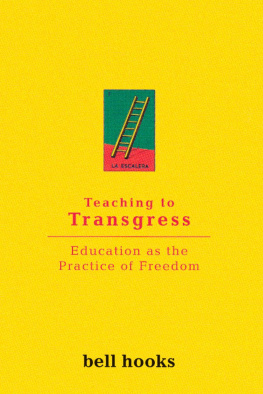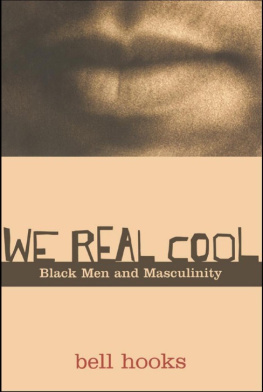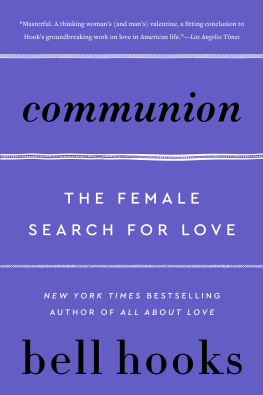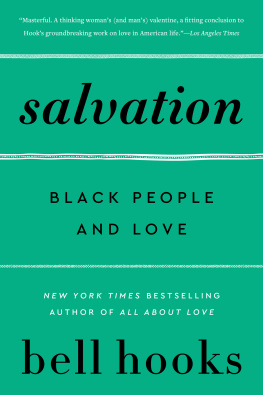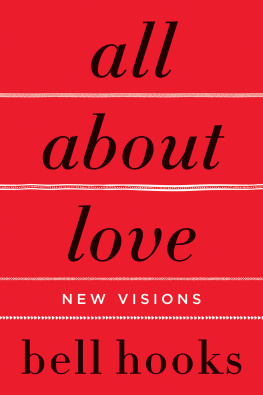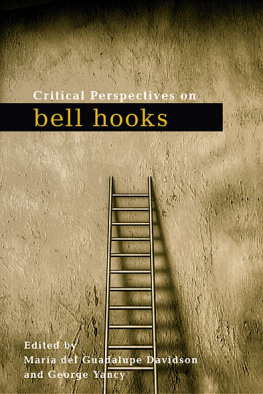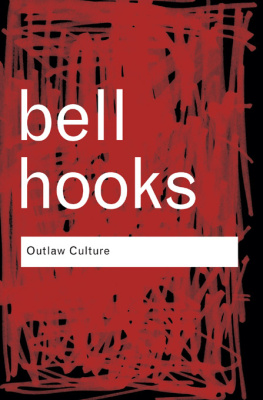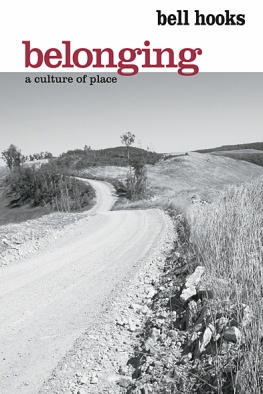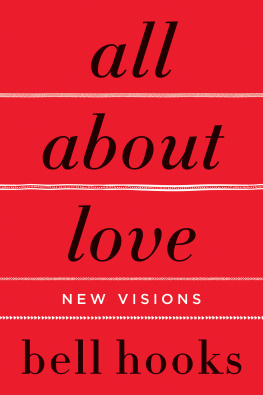bell hooks
Outlaw Culture
Resisting representations
First published 1994 by Routledge
First published in Routledge Classics 2006
by Routledge
270 Madison Ave, New York, NY 10016
Simultaneously published in the UK
by Routledge
2 Park Square, Milton Park, Abingdon, Oxon OX14 4RN
Reprinted 2008 (twice)
Routledge is an imprint of the Taylor & Francis Group, an informa business
1994 Gloria Watkins
Typeset in Joanna by RefineCatch Limited, Bungay, Suffolk Printed and bound in Great Britain by TJ International Ltd, Padstow, Cornwall
All rights reserved. No part of this book may be reprinted or reproduced or utilized in any form or by any electronic, mechanical, or other means, now known or hereafter invented, including photocopying and recording, or in any information storage or retrieval system, without permission in writing from the publishers.
Library of Congress Cataloging in Publication Data
A catalog record for this book has been requested
British Library Cataloguing in Publication Data
A catalogue record for this book is available from the British Library
ISBN10: 0-415-38958-5
ISBN13: 978-0-415-38958-7
for John Amarhstepping out on faith
CONTENTS
INTRODUCTION
The heartbeat of cultural revolution
From the moment I returned to living in a small town, children reentered my daily life. Before I left the racially segregated Southern town where I was born and raised, it would have been impossible for me to imagine a life that did not include the constant presence of children. In that world, being single and childless would not have deprived me of their company. Living in poor and working-class black culture, among extended family and community, it would have been seen as strange not to talk to, know, and love children. When I left that world to attend predominantly white universities for undergraduate and graduate study, each step I made on the ladder leading me to tenure and the distinguished professorship I hold today took me further away from the lives of children.
In the predominantly white world of bourgeois academic social relations, where children tend to be seen as private property, it is rare to have the opportunity to form close, passionate, cross-generational, non-family-based friendships. Yet when I moved to a small town six years ago and rented a large old house with plenty of bats and a tiny bathroom (off the kitchen, with no door), children just walked back into my life. Somehow word spread around the neighborhood that I had built this bright red door leading into a tiny room with low ceilings, a perfect room for small people. Children climbed the steps up to my porch and asked to see the red door. And that is how I came to be sitting in my living room one day with two little black girls, talking about teaching and writing, telling them about cultural criticism.
At first it was hard to explain the meaning of cultural studies, the practice of cultural criticism. But then a print of Jacob Lawrences painting The Lovers beckoned to me. We were all sitting facing the wall where it hung in front of a red rocking chair. My new little girlfriends have already let me know they thought I have a thing about the color red. In Trinh T. Minh-has exciting book on representation, When the Moon Waxes Red, she explains reds lure: At once an unlimited and profoundly subjective color, red can physio- or psychologically close in as well as open up. It points to both a persons boundless inner voyage, and the indeterminate outer burning of the worlds of war. Through centuries, it remains the badge of revolution. And indeed I tell the girls, Im into red cause its so revolutionary, a comment that sparks intense giggles.
We begin our talk about cultural studies with the color red, with its meaning in black life. Already they know that red is a color for seduction and desire. We talk about the Lawrence painting, what they see when they really look at ithardhard. We talk about everything we see that we like, the way the lovers are sitting on the couch with the record player beside them, looking like they are dancing, only they are sitting down. We try and imitate them. We talk about the jet black color of their bodies and the bright red of the table next to them. Already they know about color caste, about the way dark black color makes one less desirable. Connecting all these pieces, we find a way to understand Jacob Lawrence, desire and passion in black life. We practice culture criticism and feel the fun and excitement of learning in relation to living regular life, of using everything we already know to know more.
Merging critical thinking in everyday life with knowledge learned in books and through study has been the union of theory and practice that has informed my intellectual cultural work. Passionately concerned with education for critical consciousness, I continually search for ways to think, teach, and write that excite and liberate the mind, that passion to live and act in a way that challenges systems of domination: racism, sexism, class elitism. When I first begin working as an Assistant Professor of English and Black Studies at Yale University, I felt so limited by conventional pedagogy, by the emphasis on specialization and periodization. Doing interdisciplinary work in graduate school, I found this made me suspectless legitimate. It threatened folks that I could be busy writing books on black women and feminism while studying medieval literature. Crossing boundaries seemed even harder as I moved up the academic hierarchy. Everyone in authority seemed to want us to stay in one place. When that crossing was coupled with progressive commitment to Left politics and a desire to write in a manner that would make my ideas accessible to a world beyond the academy, it made me feel all the more like a radical outsider, someone who only felt at home in the marginsin womens studies and black studies where interdisciplinary work was encouraged and affirmed.
Everything changed when white male academics in the United States discovered cultural studies. Suddenly, much that had once been illegitimate became the rage. The work that I did eclectic, interdisciplinary, inspired by revolutionary political visionshad an acceptable place, another home. It could fit with the cultural studies framework black British critic Stuart Hall evoked when he declared that: The work that cultural studies has to do is to mobilize everything that it can find in terms of intellectual resources in order to understand what keeps making the lives we live, and the societies we live in, profoundly and deeply antihumane. Not only did I find in cultural studies a site where I could freely transgress boundaries, it was a location that enabled students to enter passionately a pedagogical process firmly rooted in education for critical consciousness, a place where they felt recognized and included, where they could unite knowledge learned in classrooms with life outside.
Combining theory and practice was the pedagogical strategy I had always used, that had inspired and motivated my teaching. It was great to have an acceptable framework to share knowledge that came from pushing against boundaries, moving out of ones place. In their introduction to Between Borders: Pedagogy and the Politics of Cultural Studies, Henry Giroux and Peter McLaren emphasize the way cultural studies combines theory and practice in order to affirm and demonstrate pedagogical practices engaged in creating a new language, rupturing disciplinary boundaries, decentering authority, and rewriting the institutional and discursive borderlands in which politics becomes a condition for reasserting the relationship between agency, power, and struggle. In the classroom, cultural criticism was the approach to learning that excited students, connecting them across race, class, gender, sexual practices, and a host of other differences. This excitement was intensified when the focus of critique turned to popular culture. Using this same pedagogical strategy outside the academy, I found that everyday folks from all walks of life were eager to share thoughts and talk critically about popular culture. Cultural studies was similar to Black Studies and Womens Studies in the way it affirmed interdisciplinary work, in its acknowledgment that education is not politically neutral. But it was different in that it affirmed our right and responsibility as academics to study and write about popular culture seriously. Talking critically about popular culture was a powerful way to share knowledge, in and outside the academy, across differences, in an oppositional and subversive way.
Next page
